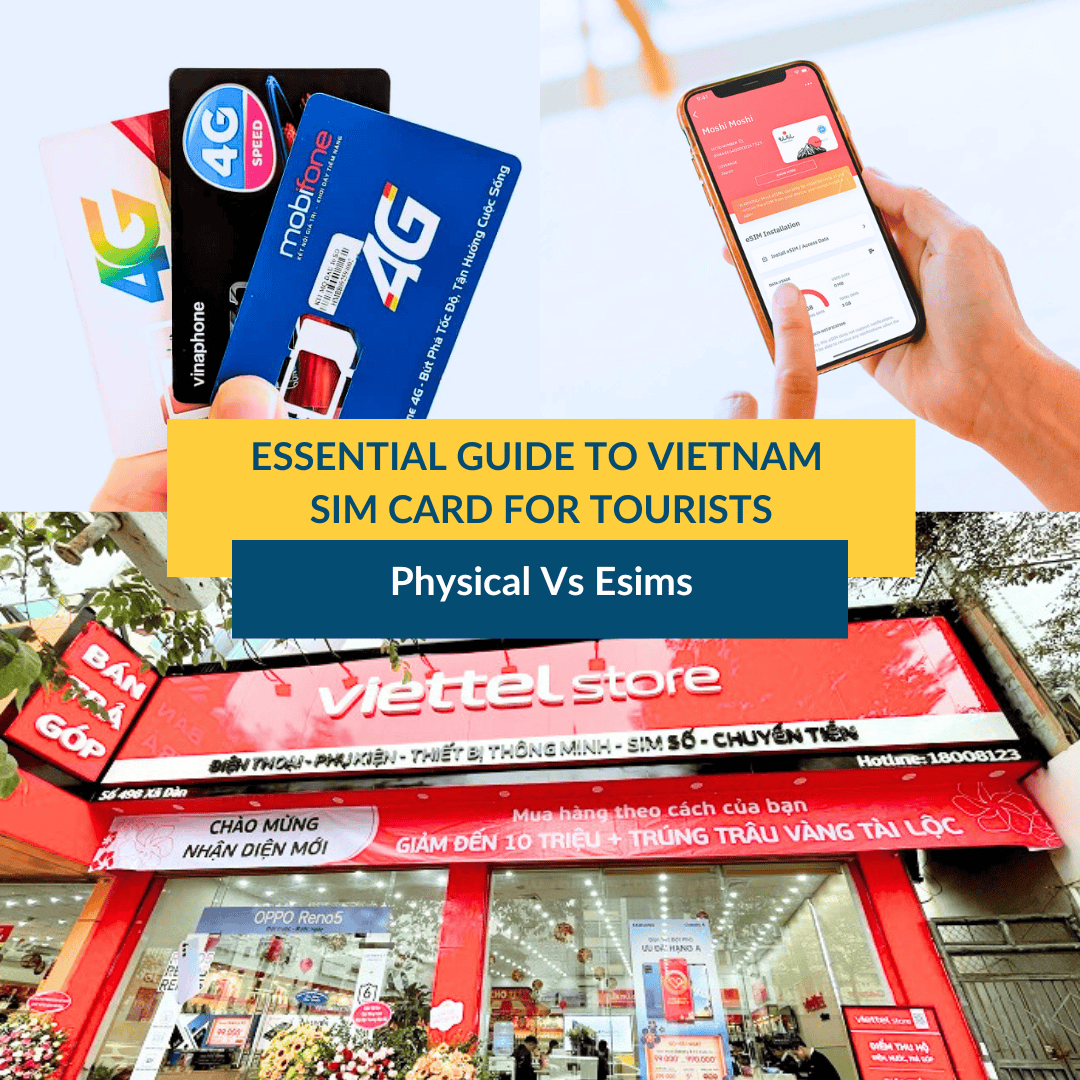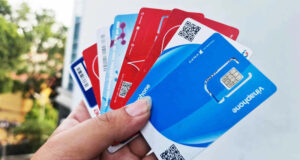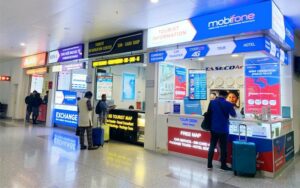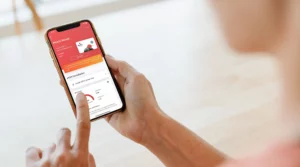
Essential Guide To Vietnam SIM Card For Tourists (Physical And Esim) – Costs And Tips
Staying connected is essential for any traveler, and in Vietnam, a local SIM card is invaluable. Prime Travel‘s guide covers everything you need to know about getting a SIM card in Vietnam, including the two main options: physical Vietnam SIM card and Vietnam eSIM.
We’ll explore the pros and cons of each, where to buy them, how much they cost, how to activate them, and offer tips for efficient usage, along with frequently asked questions. Whether you’re a short-term visitor or planning an extended stay, this guide will help you choose the best SIM card for your Vietnam adventure.
Do you need a SIM card when visiting Vietnam?
A Vietnam SIM card is invaluable for tourists arriving in Vietnam, providing reliable and affordable communication. While Wi-Fi is widely available in major cities like Hanoi, Da Nang, and Ho Chi Minh City (Saigon), its availability and speed become increasingly unreliable in smaller towns, homestays, national parks, and rural areas.
Even in cities, a Vietnam SIM card offers significant advantages. Beyond calls and texts, it grants access to mobile data, essential for navigating with Google Maps, booking taxis or Grabs, staying connected on social media, and using translation apps.
Furthermore, a Vietnam SIM card offers considerable cost savings compared to international roaming, providing much more affordable rates for calls, texts, and data. This ensures seamless communication with local services, guides, hosts, and family back home, regardless of location.
Tip: Zalo is Vietnam’s most popular messaging app.
Type of Vietnam Sim card
Physical Vietnam SIM Card
Tourists in Vietnam have two main SIM card options: traditional, physical Vietnam SIM Card and Vietnam eSIM. Physical SIM cards, readily available from local telecom providers and authorized resellers, offer a variety of data, call, and text packages tailored to different travel needs and durations.
After purchasing a physical SIM, tourists simply insert it into their unlocked phone. Available in various sizes to fit most devices, activation usually requires passport details, as per local regulations. Physical Vietnam SIM card offers widespread availability, ease of use, and broad device compatibility.
Travelers can choose from providers like Viettel, Vinaphone, and Mobifone based on coverage and preference, making this a convenient option for those familiar with traditional SIM cards. Among these, Viettel stands out as one of Vietnam’s leading telecom providers, renowned for its expansive network coverage and reliability, even in rural areas.
Vietnam eSIM
Vietnam eSIM offers a convenient, digital alternative to traditional physical SIM cards for travelers in Vietnam. Embedded directly into compatible phones and iPads, eSIMs function similarly to regular physical SIMs but are entirely software-based.
Instead of a physical plastic card, Vietnam eSIMs are remotely programmable, allowing users to switch carriers and data plans digitally, usually by scanning a QR code and managing the eSIM through an app.
While the technology has been around since 2017, it’s still relatively new. Vietnam has readily adopted eSIMs, with local telecom providers offering various options. This eliminates the hassle of handling physical cards and is especially useful for those seeking dual SIM functionality or whose devices lack a traditional SIM slot.
Vietnam eSIM will provide the same services as physical Vietnam SIM cards, including data, calls, and texts.
Physical Vietnam SIM Card vs Vietnam eSIM
| Physicial Vietnam SIM Card | Vietnam Esim | |
| Pros | · Wider Availability: Physical SIM cards are readily available at airports and mobile operator shops throughout Vietnam. Finding a seller is generally easy.
· Often Cheaper: In some cases, especially for larger data package, physical Vietnam SIM cards might be cheaper than eSIMs. This isn’t always the case, so compare prices. · Familiar Process: Many travelers are already familiar with the process of inserting and activating a physical Vietnam SIM card. |
· Convenience: Purchase and activate your Vietnam eSIM online before your trip, saving you time and hassle upon arrival.
· Instant Connectivity: Connect to data as soon as you land by scanning a QR code or using an app. No contracts, personal information required, or complicated setup. · Dual SIM Capability: Use your home number for calls and texts (roaming charges may apply) while having a local data plan on the eSIM. Ideal for single SIM slot phones. · Easy Switching Between Plans/Carriers (Sometimes): Some eSIM providers make it easy to switch between data plans or even carriers. |
| Cons | · Time-Consuming: You’ll need to spend time searching for a shop, potentially dealing with language barriers, and physically inserting the Vietnam SIM card.
· Risk of Loss or Damage: Physical SIM cards can be easily lost or damaged. · Requires Ejecting Your Home SIM: You’ll need to remove your home SIM card, meaning you might miss calls or texts to your regular number (unless your phone is dual SIM). · Less Convenient for Multi-Country Travel: Switching SIM cards in each country can become cumbersome. Regional eSIM packages offer a simpler solution, allowing seamless connectivity across multiple countries. |
· Device Compatibility: Your phone or tablet must be eSIM compatible. Check this 2025 list of devices that support eSIM technology.
· Potentially Higher Cost (Sometimes): eSIM data plans can sometimes be slightly more expensive than physical SIM cards, especially for very basic data needs. However, this isn’t always true, and the convenience often outweighs the small price difference. Compare prices. · Reliance on Technology: You need a stable internet connection (before arrival) to purchase and activate the eSIM. · Data only: so you will have to use apps for communication. · Potential Technical Issues: While activation is usually smooth, occasional technical glitches can occur. · Less Local Support: If you encounter problems, you’ll rely on online support rather than in-person assistance from a local shop. |
Where to buy Vietnam SIM card
On Site
- Airports: Vietnam’s major airports, including Noi Bai (Hanoi airport), Tan Son Nhat (Ho Chi Minh airport), and Da Nang, offer convenient on-site Vietnam SIM card purchases for tourists. These kiosks or counters within the airport terminals requires no registration, making it easy for travelers to get connected upon arrival.
However, the prepaid SIM isn’t registered to you but to a third party, so it can be shut down any time. Plus, airport SIM cards are often overpriced, so it’s generally best to avoid them if possible.
- Mobile Stores: Outside of airports, tourists can find Vietnam SIM cards at mobile stores throughout cities and tourist areas. These stores, run by telecom providers or authorized resellers, offer a wider selection of plans, allowing visitors to compare options and choose the best package for their needs. Staff can also provide assistance with selection and activation.
Online
Modern travelers can conveniently purchase and activate a Vietnam eSIM online. Because a stable internet connection is required to purchase and activate an eSIM, it’s best to install your Vietnam eSIM one day before your trip. This allows you to confirm the installation and troubleshoot any connection problems beforehand.
The process usually involves choosing a plan, submitting identification, and then activating the eSIM by scanning a QR code or following app instructions. This ensures immediate connectivity upon arrival, offering a flexible and efficient solution for those with compatible devices. Then, you only have to switch to your Airalo eSIM provider in your phone’s network settings when you land in Vietnam. You’ll be connected.
How much is a Vietnam SIM card
Physical Vietnam SIM Card Cost
When buying a traditional, physical Vietnam SIM card, consider whether you want a prepaid or postpaid plan and if you need a regular SIM for calls and texts or a data-only SIM.
- Prepaid SIMs typically have lower upfront costs (around 50,000 VND – US$2) but require top-ups. Postpaid SIMs have a higher initial cost (about 60,000 VND) with billing after usage.
- Regular SIMs support calls and texts, while data-only SIMs vary in price (from 90,000 VND – under US$4 for 45GB (1.5GB/day) for 30 days for Viettel) depending on data allowance and validity. These prices are current at the time of writing and are subject to change. Please check the current price in the link here.
- Topping up: Topping up your mobile credit in Vietnam is simple. Top-up vouchers are widely available in tourist areas, and vendors often assist with the process, even with limited English. For Viettel users, topping up involves dialing 100<top-up card code># and then sending an SMS to 9123 to activate the desired data package.
Vietnam eSIM Cost
For longer stays, a local SIM card with a Vietnamese phone number is recommended, as many businesses and apps require one. But for short trips to Vietnam and if a local phone number isn’t essential, a Vietnam eSIM is a great option. Airalo is a popular eSIM provider.
- Airalo’s 3GB data package for $9.50 offers a reasonable option for short trips, though data needs vary. For other package please check this link
- Topping up is easy: simply select your Vietnam eSIM in the Airalo app, choose the top-up option, and repurchase the same plan. Top-up packages match the original eSIM’s price and duration.
- Network: Airalo’s Vietnam eSIM is able to connect with Vietttel and Mobifone network in Vietnam.The data speeds are fast
Whether you choose a physical Vietnam SIM card or a Vietnam eSIM, careful planning is key. First, assess your usage: how much data will you need for maps, browsing, etc.? Will you be making many calls or sending texts? Then, consider the length of your trip. Choose a SIM card or eSIM package with a validity period that covers your entire stay.
How to activate Vietnam SIM card?
Physical Vietnam SIM Card
Activating a physical Vietnam SIM card is usually simple, though the exact steps might differ slightly between providers.
- Insert the card into your unlocked phone and power it on.
- Receive activation messages with your new number and balance.
- Verify identification: Some providers might require further additional verification (e.g., via text or in person).
- Top up: Prepaid SIMs typically need a top-up to use services, which can be done through various methods.
- Configure settings: You may also need to configure APN settings for data.
- Restarting your device can ensure everything works correctly.
Vietnam eSIM
Activating an eSIM is generally straightforward, with similar steps across providers.
- Receive QR code: After choosing an eSIM plan and purchasing it, you’ll receive a QR code (often via email or accessible in an app like Airalo).
- Scan QR code: In your phone’s settings (Mobile Data on iPhones, Network & Internet on Android, or Connections > SIM manager on Samsung Galaxy phones), select “Add Plan/Add/Add eSIM.” Scan the QR code or, if necessary, manually enter the activation code.
- Change your data roaming settings: Crucially, set your eSIM as the default for data and disable data roaming for your physical SIM. Your eSIM is now ready to use and can be easily activated or deactivated in your phone’s settings.
Tips for efficient usage with a Vietnam SIM card for tourists
- To maximize your experience with a Vietnamese SIM card, keep these tips in mind:
- Know the country code (+84) and local area codes for easy dialing.
- Monitor your data usage to avoid extra charges – set limits and use Wi-Fi when possible.
- Choose a data plan that fits your needs, whether data-focused or balanced with calls and texts.
- Use messaging apps like WhatsApp or Zalo for affordable international communication.
- Finally, save local emergency contacts in your phone for quick access.
FAQ about Vietnam SIM card
Can I use an Vietnam eSIM with my foreign phone?
Most newer smartphones (as mention above) support eSIM functionality. However, it’s crucial to confirm compatibility with your specific device. Contact your phone’s manufacturer or carrier. Regional variations and carrier locking can sometimes affect eSIM support
What is the best SIM card for tourists in Vietnam?
The “best” SIM card depends on your individual needs. Consider these factors:
- Trip length: For short trips, a data-only eSIM (like Airalo) might suffice. Longer stays often benefit from a local SIM with a Vietnamese phone number.
- Data usage: Estimate how much data you’ll need for maps, browsing, social media, etc.
- Call/text needs: Will you be making local or international calls? How often will you be texting?
- Budget: Compare prices and packages from different providers (Viettel, Mobifone, Vinaphone are the major ones).
- Convenience: eSIMs offer greater convenience, while physical SIMs might be slightly cheaper in some cases.
What should I do if my Vietnam SIM card is not working?
Troubleshooting steps:
- Check basic settings: Ensure your phone is not in airplane mode and that mobile data is enabled. Verify APN settings if necessary (your provider should provide these).
- Restart your device: A simple restart often resolves minor technical glitches.
- Check your balance: If prepaid, ensure you have sufficient credit.
- Verify network coverage: Make sure you’re in an area with network reception.
- Contact your provider: If the problem persists, contact your SIM card provider’s customer support. They can help diagnose and resolve the issue. For eSIMs, this will be online support. For physical SIMs, you might need to find a local store of the provider.
- Check the SIM card: If you’re using a physical SIM, carefully remove it and reinsert it, ensuring it’s properly placed in the SIM card slot. Inspect the SIM card for any visible damage.
- Check validity: Ensure your SIM card or eSIM plan hasn’t expired.
If all else fails, and you’re using a physical SIM, consider visiting a store of your provider for assistance. If you’re using an eSIM, contact their online support.
Explore Related Blog Posts >>>
A Smart Traveler’s Guide to Exchange Money in Vietnam 2024
Vietnam trip cost: The best budget-friendly from Australia 2024










